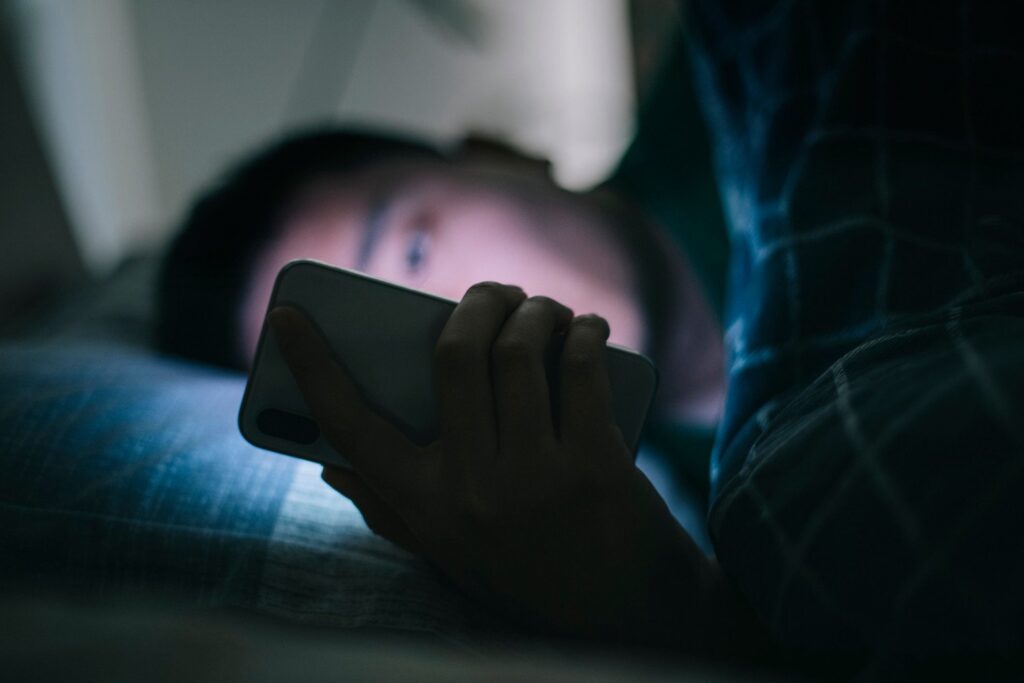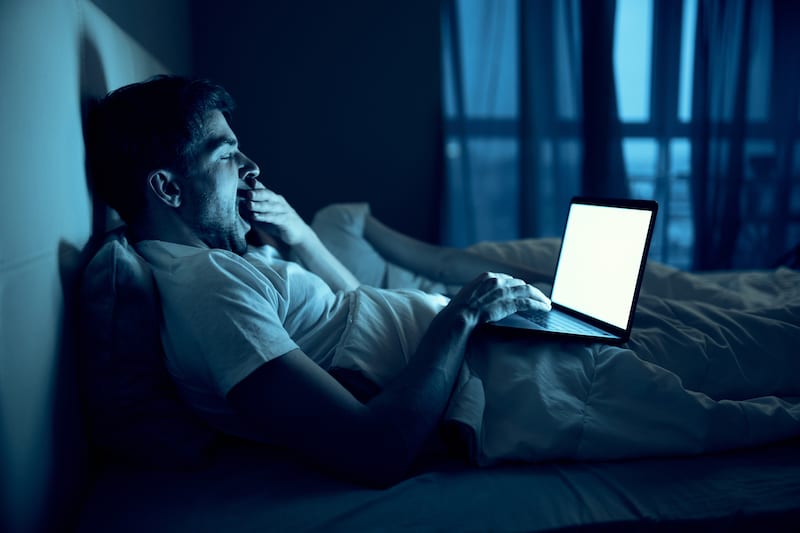In today’s digital age, spending long hours in front of a computer has become a daily norm. Whether it’s for work, entertainment, or staying connected, screens dominate our lives. However, the blue light emitted by these devices can significantly disrupt your sleep patterns, leading to poor sleep quality and various health issues. In this article, we’ll explore effective tips for minimizing the impact of blue light on your sleep, ensuring you get the restful night’s sleep you deserve.
Understanding Blue Light and Its Effects on Sleep
Blue light is a high-energy visible light emitted by digital screens, including computers, smartphones, and tablets. While blue light exposure during the day can be beneficial—boosting alertness and improving mood—excessive exposure, especially in the evening, can interfere with your sleep.
See Also: King Furniture Outlet Sydney: Where to Find Stylish and Affordable Furniture in Sydney
The primary way blue light affects sleep is by disrupting the production of melatonin, the hormone responsible for regulating sleep-wake cycles. When you use your computer or other digital devices late into the evening, the blue light can trick your brain into thinking it’s still daytime, making it difficult for you to fall asleep.
Taking proactive steps to reduce blue light exposure in the evening is crucial, especially if you’re concerned about the potential costs of sleep disorders. Understanding how sleep disruptions can lead to the need for a sleep apnea test and knowing the associated costs can motivate you to adopt healthier habits.
Tips for Reducing Blue Light Exposure
To improve your sleep quality after using a computer, consider implementing the following tips to minimize blue light exposure:
1. Use Blue Light Filters:
Many computers and smartphones now come with built-in blue light filters that reduce the amount of blue light emitted by the screen. These filters, often referred to as “night mode” or “night shift,” adjust the color temperature of your display, making the screen appear warmer and less harsh on your eyes.
How to Enable Blue Light Filters:
- Windows: Go to Settings > System > Display > Night Light settings and adjust the schedule and intensity.
- MacOS: Go to System Preferences > Displays > Night Shift and customize the settings.
- Smartphones: Most Android and iOS devices have a night mode feature in the display settings.
2. Invest in Blue Light Blocking Glasses:
If you frequently use your computer in the evening, consider investing in blue light blocking glasses. These glasses are designed to filter out blue light, reducing its impact on your eyes and helping to maintain your natural sleep-wake cycle.
Benefits of Blue Light Blocking Glasses:
- Reduce eye strain and fatigue.
- Improve sleep quality by allowing melatonin production to occur naturally.
- Can be worn throughout the day, especially if you spend extended periods in front of screens.
3. Adjust Your Lighting Environment:
In addition to blue light from screens, the lighting in your environment can also impact your sleep. Consider using dim, warm-colored lights in the evening to create a relaxing atmosphere that promotes sleep.
Lighting Tips for Better Sleep:
- Use dimmable lights or lamps with warm-toned bulbs in your bedroom.
- Avoid bright, overhead lighting in the hours leading up to bedtime.
- Consider using smart lighting systems that gradually dim the lights as bedtime approaches.
4. Limit Screen Time Before Bed:
One of the most effective ways to reduce blue light exposure is by limiting your screen time in the evening. Aim to stop using your computer, smartphone, or tablet at least an hour before bedtime to allow your body to wind down naturally.
Alternative Evening Activities:
- Read a physical book or listen to an audiobook.
- Practice relaxation techniques such as meditation or deep breathing exercises.
- Engage in light stretching or yoga to relax your body and mind.
5. Consider Blue Light Blocking Software:
If you need to use your computer in the evening, consider installing blue light blocking software. These programs automatically adjust the color temperature of your screen based on the time of day, reducing blue light exposure and minimizing its impact on your sleep.

Popular Blue Light Blocking Software:
- f.lux: Available for Windows, MacOS, and Linux, f.lux automatically adjusts your screen’s color temperature according to your location and time of day.
- Iris: This software offers various settings to reduce blue light and optimize your screen for eye comfort.
- Redshift: An open-source alternative that adjusts your screen’s color temperature based on your location and sunrise/sunset times.
The Importance of a Sleep-Friendly Routine
Creating a sleep-friendly routine is essential for combating the effects of blue light and ensuring a restful night’s sleep. Here are some tips to incorporate into your nightly routine:
1. Establish a Consistent Sleep Schedule:
Going to bed and waking up at the same time every day helps regulate your internal clock, making it easier to fall asleep and wake up naturally.
2. Create a Relaxing Pre-Bedtime Ritual:
Incorporate activities that promote relaxation into your nightly routine. This could include taking a warm bath, practicing mindfulness meditation, or listening to calming music.
3. Keep Your Bedroom Environment Cool and Comfortable:
The temperature of your bedroom can significantly impact your sleep quality. Aim to keep your room cool, between 60-67°F (15-19°C), and ensure your mattress and pillows are comfortable and supportive.
4. Avoid Caffeine and Heavy Meals Before Bed:
Caffeine and heavy meals can disrupt your sleep, so try to avoid them in the hours leading up to bedtime. Instead, opt for a light snack or herbal tea to help you wind down.
5. Monitor Sleep Quality:
If you continue to struggle with sleep despite these adjustments, it may be worth monitoring your sleep quality with a sleep tracking device. These devices can provide insights into your sleep patterns and help you identify areas for improvement.
The Link Between Blue Light and Sleep Disorders
Excessive blue light exposure can contribute to the development of sleep disorders, such as insomnia or delayed sleep phase disorder. In some cases, these sleep disruptions can lead to the need for medical intervention, such as a sleep apnea test cost. Sleep apnea, a condition characterized by repeated pauses in breathing during sleep, can be exacerbated by poor sleep quality and irregular sleep patterns.
Signs You May Need a Sleep Apnea Test:
- Loud snoring or choking sounds during sleep.
- Excessive daytime sleepiness despite adequate sleep duration.
- Frequent awakenings throughout the night or difficulty staying asleep.
- Morning headaches or dry mouth upon waking.

Preventing Sleep Disorders Through Healthy Sleep Habits:
By reducing blue light exposure and adopting healthy sleep habits, you can lower your risk of developing sleep disorders. If you suspect you may have a sleep disorder, it’s important to consult with a healthcare professional who can provide a proper diagnosis and recommend appropriate treatments.
Conclusion
In today’s digital world, blue light exposure from computers and other screens is unavoidable, but its impact on your sleep can be managed with the right strategies. By implementing the tips outlined in this guide—such as using blue light filters, investing in blue light blocking glasses, and establishing a sleep-friendly routine—you can significantly improve your sleep quality and reduce the risk of sleep disorders.
